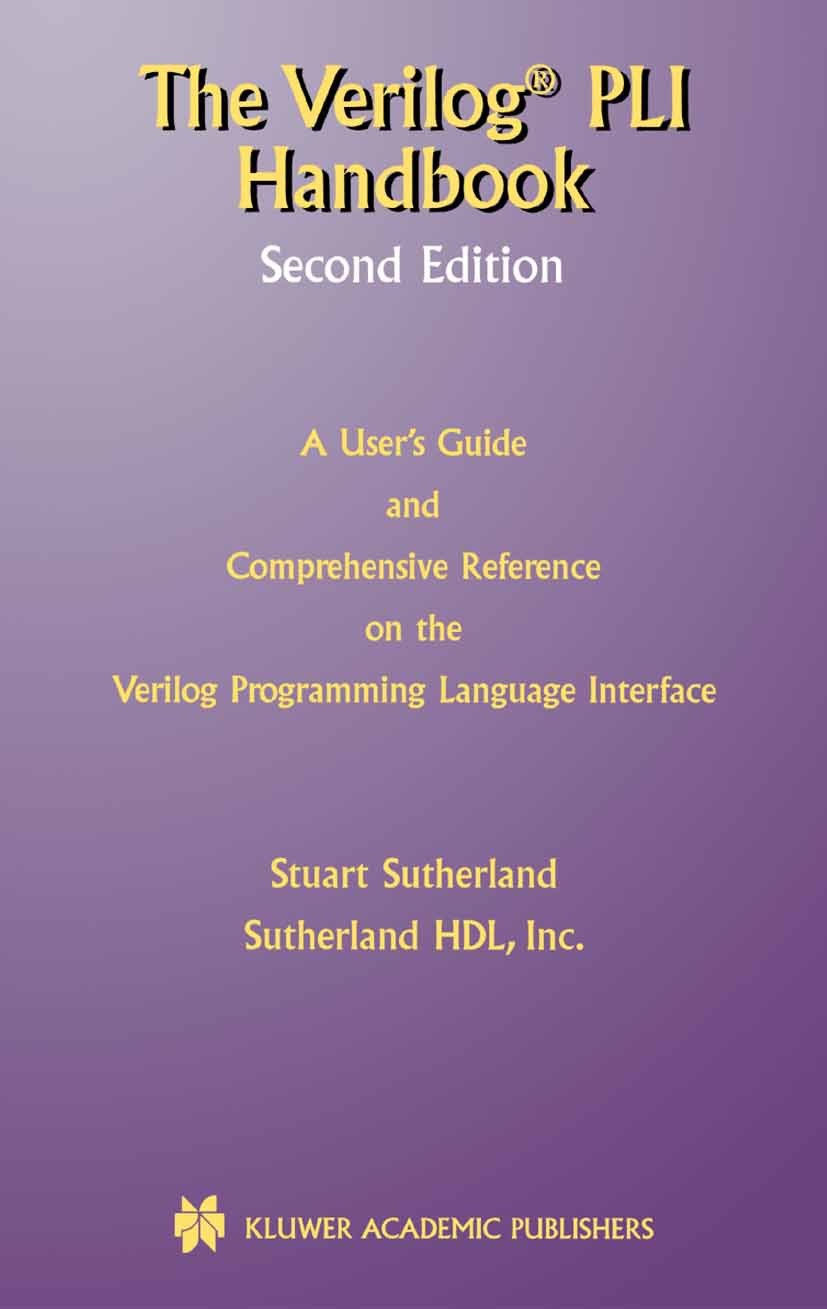| 书目名称 | The Verilog PLI Handbook | | 副标题 | A User’s Guide and C | | 编辑 | Stuart Sutherland | | 视频video | http://file.papertrans.cn/922/921990/921990.mp4 | | 丛书名称 | The Springer International Series in Engineering and Computer Science | | 图书封面 |  | | 描述 | by Maq Mannan President and CEO, DSM Technologies Chairman of the IEEE 1364 Verilog Standards Group Past Chairman of Open Verilog International One of the major strengths of the Verilog language is the Programming Language Interface (PLI), which allows users and Verilog application developers to infinitely extend the capabilities of the Verilog language and the Verilog simulator. In fact, the overwhelming success of the Verilog language can be partly attributed to the exi- ence of its PLI. Using the PLI, add-on products, such as graphical waveform displays or pre and post simulation analysis tools, can be easily developed. These products can then be used with any Verilog simulator that supports the Verilog PLI. This ability to create thi- party add-on products for Verilog simulators has created new markets and provided the Verilog user base with multiple sources of software tools. Hardware design engineers can, and should, use the Verilog PLI to customize their Verilog simulation environment. A Company that designs graphics chips, for ex- ple, may wish to see the simulation results of a new design in some custom graphical display. The Verilog PLI makes it possible, and even trivial | | 出版日期 | Book 2002Latest edition | | 关键词 | C programming language; Interface; Standard; Verilog; learning; programming; programming language; simulati | | 版次 | 2 | | doi | https://doi.org/10.1007/b116513 | | isbn_softcover | 978-1-4757-8371-1 | | isbn_ebook | 978-0-306-47665-5Series ISSN 0893-3405 | | issn_series | 0893-3405 | | copyright | Springer Science+Business Media New York 2002 |
The information of publication is updating

|
|
 |Archiver|手机版|小黑屋|
派博传思国际
( 京公网安备110108008328)
GMT+8, 2025-11-13 13:44
|Archiver|手机版|小黑屋|
派博传思国际
( 京公网安备110108008328)
GMT+8, 2025-11-13 13:44


